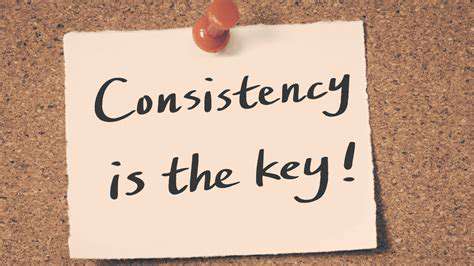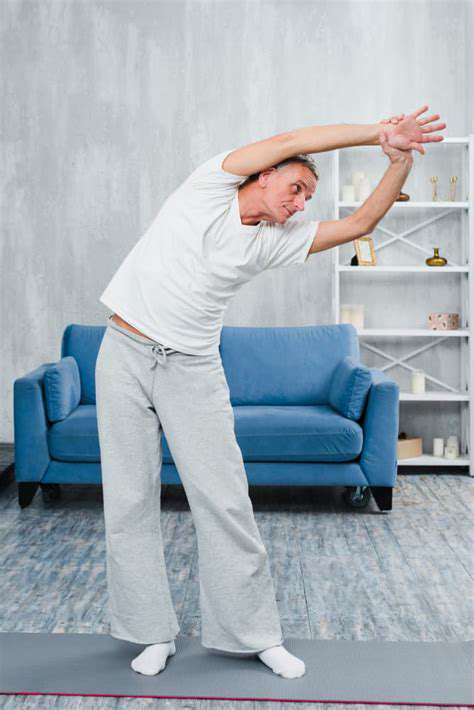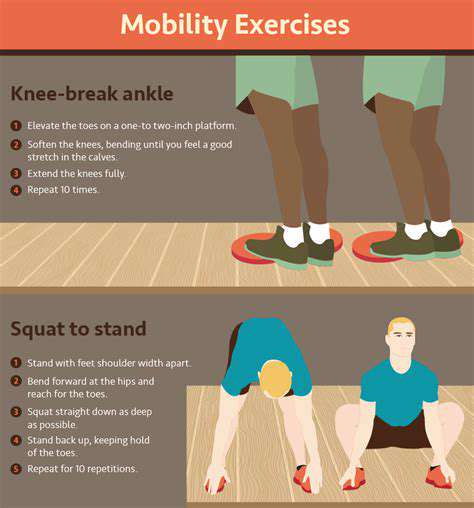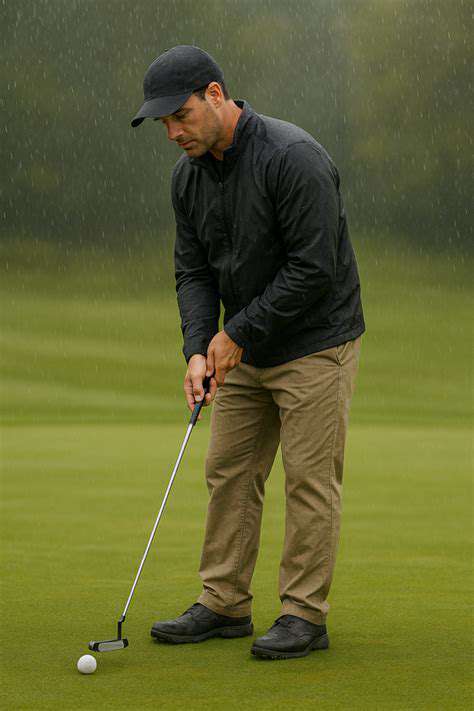Balance Exercises for Walker Users: Staying Steady
Simple Exercises to Enhance Balance
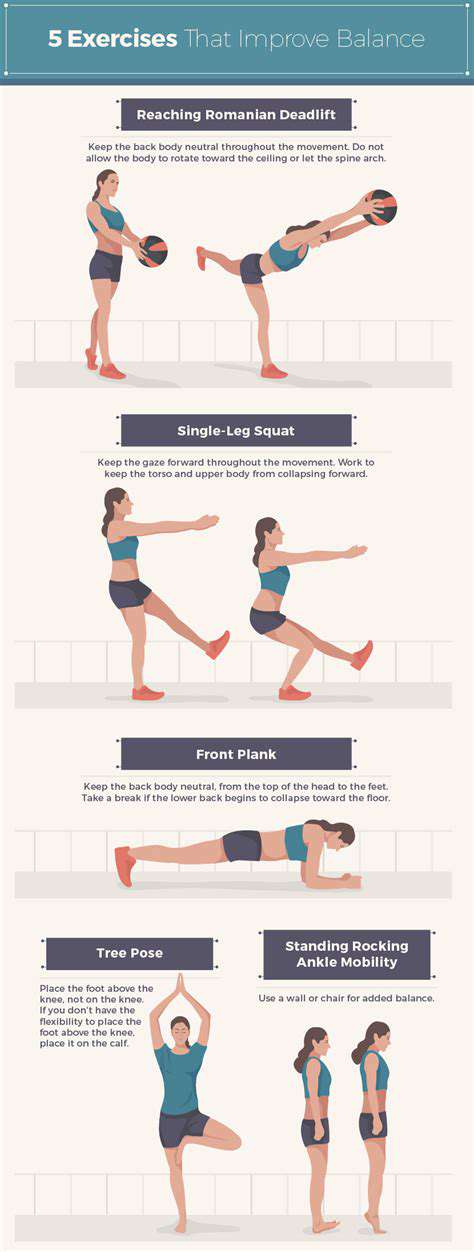
Standing on One Leg
A simple yet effective exercise for improving balance is standing on one leg. This seemingly basic exercise challenges your proprioception, the sense of body position in space. By concentrating on maintaining your balance, you're actively strengthening the muscles in your legs, core, and ankles. Focus on keeping your knees slightly bent and your core engaged, and try to hold the position for as long as you can without losing your balance. Practice this regularly, gradually increasing the duration and difficulty by trying to close your eyes while standing on one leg.
Beginners should aim for 10-15 seconds on each leg, gradually increasing the duration as balance improves. This exercise can be done anywhere, making it a great option for incorporating into your daily routine.
Heel-to-Toe Walks
Heel-to-toe walking is a fantastic exercise for improving balance and coordination. It's a low-impact exercise that can be performed at a slow or moderate pace. Proper form is crucial for maximizing benefits and minimizing risk of injury. Ensure you're placing your heel directly in front of your toes, maintaining a straight posture and a controlled movement.
Start with shorter distances and gradually increase the length of your walks as your balance improves. This exercise strengthens the muscles in your legs and ankles, enhancing stability and reducing the risk of falls, especially in older adults.
Chair Stands
Chair stands are an excellent exercise for improving lower body strength and balance, often used in rehabilitation programs. This exercise builds lower body strength and stability, which are vital for everyday activities like getting up from a chair or climbing stairs.
Start by sitting on a sturdy chair with your feet flat on the floor. Slowly stand up, engaging your core and leg muscles, and then slowly lower yourself back down to the chair. Repeat this movement several times, focusing on maintaining good posture and controlled movements. This exercise can be modified to suit different fitness levels. For example, you can place your feet further apart for increased stability or use a chair with arms for added support.
Side-to-Side Leg Swings
Side-to-side leg swings are great for improving hip and leg flexibility and balance. These swings enhance the range of motion in your hips and legs, which are essential for maintaining balance and preventing injuries.
Stand with your feet hip-width apart and hold onto a stable surface for balance if needed. Slowly swing one leg out to the side, keeping your core engaged and your back straight. Maintain control throughout the movement and return the leg to its starting position. Repeat with the other leg, ensuring smooth and controlled movements. Focus on maintaining your balance and keeping your core engaged throughout the exercise.
Standing with Eyes Closed
A classic balance challenge, standing with your eyes closed, is a great way to improve proprioception and trust your body's ability to maintain stability. This exercise challenges your body's natural balance mechanisms. By eliminating visual cues, you're forced to rely solely on your inner sense of balance, strengthening your body's proprioceptive system. This can be a challenging exercise, so it's essential to start with short durations and gradually increase the time spent with your eyes closed.
Begin by standing with your feet together and your eyes open, ensuring you have a stable base. Once you feel balanced, close your eyes and try to maintain your posture. As you become more comfortable, gradually increase the duration of this exercise.
Incorporating Proprioceptive Exercises

Understanding Proprioception
Proprioception is the sense of body position and movement. It's a crucial component of motor control, enabling us to navigate the world without constantly looking at our limbs. This internal awareness allows for smooth, coordinated movements and helps prevent injuries by providing feedback on joint positions and muscle tension. Understanding proprioception is key to appreciating its vital role in physical activity and everyday life.
Proprioceptive input comes from sensory receptors located in muscles, tendons, and joints. These receptors constantly send signals to the central nervous system, providing information about the body's position, movement, and the forces acting upon it. This constant feedback loop is essential for maintaining balance, posture, and coordinated movements.
Benefits of Proprioceptive Exercises
Incorporating proprioceptive exercises into a fitness routine offers a multitude of benefits, enhancing both athletic performance and overall well-being. These exercises improve stability, balance, and coordination, which are critical for preventing falls and injuries, especially as we age.
Improved proprioception directly translates to enhanced athletic performance. It allows for more precise and controlled movements, leading to better agility, speed, and power. This is particularly important in sports requiring rapid changes in direction and complex movements.
Moreover, proprioceptive exercises can contribute to a stronger sense of body awareness, which can be valuable in daily activities like walking, climbing stairs, or performing household chores.
Types of Proprioceptive Exercises
A variety of exercises can be used to stimulate proprioception, each targeting different aspects of body awareness. Examples include single-leg stance exercises, balance board workouts, and exercises using resistance bands or proprioceptive training devices.
These exercises often require a mindful focus on maintaining balance and control, thus engaging the proprioceptive system. Practicing these exercises regularly can enhance balance and body awareness, leading to improved motor skills and reduced risk of injuries. The specific exercises chosen should be tailored to the individual's needs and fitness level.
Implementing Proprioceptive Training
To effectively incorporate proprioceptive training into your routine, start with simple exercises and gradually increase the difficulty. Focus on maintaining control and stability throughout each movement to maximize the benefits.
Consistency is key to improving proprioception. Aim for regular practice, even if it's just a few minutes each day. By incorporating these exercises into a structured program, you can systematically improve your body awareness, coordination, and stability. Consider consulting with a physical therapist or certified personal trainer to develop a personalized proprioceptive training plan.
Advanced Balance Exercises for Walker Users
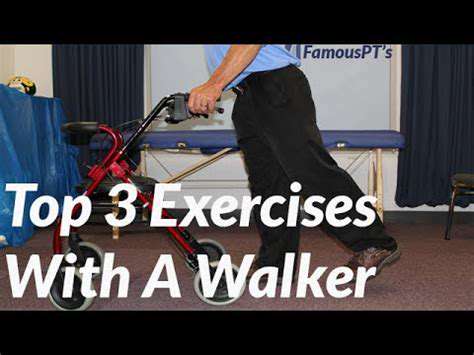
Improving Balance Through Challenging Exercises
Advanced balance exercises are crucial for individuals seeking to enhance their stability and prevent falls, especially as they age. These exercises progressively increase the difficulty by incorporating various factors that challenge the body's equilibrium. By incorporating these exercises into a regular routine, individuals can significantly improve their overall balance and coordination. These exercises aim to build strength and proprioception, which are essential for maintaining balance in daily activities.
Single-Leg Balance with Variations
Single-leg balance exercises are a cornerstone of advanced balance training. These exercises require a high degree of concentration and coordination. Maintaining balance on one leg while performing other movements, such as reaching or turning, further enhances the complexity and effectiveness of the exercise. Practicing on various surfaces, like a foam pad or a slightly uneven surface, will further increase the challenge and improve proprioception.
Variations include holding light weights while performing the exercise or incorporating movements like heel-to-toe taps or knee lifts.
Standing on a Balance Board
Utilizing a balance board, often called a wobble board, is an excellent way to challenge your balance system. The unstable surface of the board forces your body to constantly adjust its position, strengthening the muscles responsible for balance and coordination. This dynamic adjustment promotes the development of proprioception, which is your body's awareness of its position in space. This translates to improved balance in everyday activities, such as walking and stair climbing.
Gradually increase the difficulty by using a more unstable balance board or performing exercises like squats or lunges on it.
Standing on One Leg with Eyes Closed
Closing your eyes while standing on one leg elevates the difficulty significantly. This exercise removes visual cues, forcing your body to rely more heavily on inner ear and muscle feedback to maintain balance. This enhanced reliance on proprioceptive input strengthens your body's ability to adjust to unexpected movements. This exercise is particularly beneficial for improving balance when walking or navigating challenging terrains.
Alternating Leg Raises with a Reach
This exercise combines balance challenges with upper body movements, creating a more comprehensive approach. Alternating leg raises with a reach involves raising one leg while simultaneously reaching forward with the opposite arm. This coordinated movement demands significant core engagement and balance control. This exercise enhances both upper and lower body strength and coordination, which directly translates to improved balance and stability.
Standing Heel-to-Toe Walk
Heel-to-toe walking is a classic balance exercise that challenges your body's ability to maintain a precise alignment. This exercise involves taking steps where the heel of one foot meets the toe of the other foot, creating a straight line. Maintaining this precise alignment demands significant balance and coordination. This exercise is beneficial for individuals who experience difficulties with gait or balance issues.
Dynamic Balance Exercises
Dynamic balance exercises involve moving while maintaining balance. Examples include walking on a balance beam, stepping over obstacles, or performing controlled turns while keeping your center of gravity stable. These exercises are particularly important for improving balance in real-world situations. It's important to practice these exercises gradually to avoid injury. These exercises are ideal for improving overall stability and agility.

